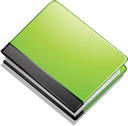Category Books
- Fiction Books & Literature
- Graphic Novels
- Horror
- Mystery & Crime
- Poetry
- Romance Books
- Science Fiction & Fantasy
- Thrillers
- Westerns
- Ages 0-2
- Ages 3-5
- Ages 6-8
- Ages 9-12
- Teens
- Children's Books
- African Americans
- Antiques & Collectibles
- Art, Architecture & Photography
- Bibles & Bible Studies
- Biography
- Business Books
- Christianity
- Computer Books & Technology Books
- Cookbooks, Food & Wine
- Crafts & Hobbies Books
- Education & Teaching
- Engineering
- Entertainment
- Foreign Languages
- Game Books
- Gay & Lesbian
- Health Books, Diet & Fitness Books
- History
- Home & Garden
- Humor Books
- Judaism & Judaica
- Law
- Medical Books
- New Age & Spirituality
- Nonfiction
- Parenting & Family
- Pets
- Philosophy
- Political Books & Current Events Books
- Psychology & Psychotherapy
- Reference
- Religion Books
- Science & Nature
- Self Improvement
- Sex & Relationships
- Social Sciences
- Sports & Adventure
- Study Guides & Test Prep
- Travel
- True Crime
- Weddings
- Women's Studies
Emergency Broadcasting and 1930s Radio »

Authors: Edward D. Miller
ISBN-13: 9781566399920, ISBN-10: 1566399920
Format: Hardcover
Publisher: Temple University Press
Date Published: December 2002
Edition: (Non-applicable)
Author Biography: Edward D. Miller
Book Synopsis
The voice we hear on the radio—the voice with no body attached—is a key element in the history of media in the twentieth century. Before television and the internet, there was radio; and much of what defined the makeup of these newer media was influenced by the way radio was broadcast to people and the way people listened to it.
Emergency Broadcasting focuses on key moments in the history of early radio in order to come to an understanding of the role voice played in radio to describe national crises, a fictional invasion from outer space, and general entertainment. Taking the Hindenburg disaster, The War of the Worlds hoax, Franklin Roosevelt's Fireside Chats, and the serial mystery The Shadow as his focal points, Edward Miller illustrates how the radio, for the first time, instantly communicated to a mass audience, and how that communication—where the voice counts more than the image—is still at work today in television and the World Wide Web.
Theoretically sophisticated, yet grounded in historical detail, Emergency Broadcasting offers a unique examination of radio and at the same time develops a complex understanding of the media whose birth is owed to the innovations—and disembodied power—established by it.
Author Biography: Edward Miller is Assistant Professor in the Department of Media and Culture at the College of Staten Island.
The New Yorker
"CQ, CQ, CQ, this is W2OJW, calling CQ. Whiskey Two Oscar Juliet Whiskey in Hackensack, New Jersey, standing by for a call.” For seventy-four years, before his “key went silent,” in 2001, this was the nightly appeal of Jerry Powell, an aeronautical engineer, amateur trombonist, and avid ham-radio operator. Powell’s devotion to vacuum tubes, multiband yagis, parallel RLC circuits, and midnight conversations with fellow-hams from Moscow to Montevideo is celebrated by Danny Gregory and Paul Sahre in the colorful Hello World: A Life in Ham. Hams, as Gregory and Sahre discovered, "come in all shapes and sizes and live all over the world." Although ham radio is generally considered an arcane pastime reserved for microhenry-obsessed nerds, recent estimates put the number of worldwide hams at more than two million, including such devoted practitioners as Marlon Brando (ham call sign FO5GJ), Donny Osmond (WD4SKT), George Pataki (K2ZCZ), and King Juan Carlos of Spain (EA0JC).
The first hams, or narrowcasters, pop up in Edward D. Miller's Emergency Broadcasting, a rumination on the nature and meaning of early radio. Miller, who likens radio in the nineteen-thirties to the Internet in its first decade, gives us the untamed era of Herbert Morrison's broadcast of the Hindenburg disaster and Orson Welles' "War of the Worlds." In those days, voices in the ether inspired utopian visions, prompting Collier's to assert that radio would create a "strong and well-knit people" It"s a notion that today's hams -- ensconced in the purple glow of their transmitters -- continue to broadcast.
(Mark Rozzo)Table of Contents
| Acknowledgments | ||
| 1 | Introduction: Thrown Voices | 1 |
| 2 | The Uncanny Home and the Transmitted Voice | 14 |
| 3 | The Recital of the Hindenburg Disaster | 48 |
| 4 | Radio and the Voice and Body of the President | 77 |
| 5 | The Case of the "War of the Worlds" | 106 |
| 6 | Echo's Broadcast: Desire and Disembodiment | 141 |
| 7 | Body and Space in the Radio and Internet | 179 |
| Notes | 207 | |
| Bibliography | 229 | |
| Index | 241 |
Subjects
 Business History
Business History  Consumer Goods Industry - History
Consumer Goods Industry - HistoryEngineering
 Telecommunications
Telecommunications  Radio Stations & Broadcasting
Radio Stations & BroadcastingEntertainment
 Media
Media  Radio - History & Criticism
Radio - History & CriticismEntertainment
 Radio
Radio  Radio - History & Criticism
Radio - History & CriticismEntertainment
 Radio
Radio  Radio Stations & Broadcasting
Radio Stations & BroadcastingNonfiction
 Social Sciences
Social Sciences  Media & Communications
Media & CommunicationsScience & Nature
 Social Sciences
Social Sciences  Media & Communications
Media & CommunicationsSocial Sciences
 Media & Communications
Media & Communications  Radio - History & Criticism
Radio - History & CriticismNonfiction
 Entertainment
Entertainment  Media
MediaNonfiction
 Entertainment
Entertainment  Radio
Radio
